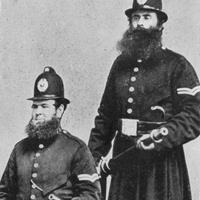Our History
Merseyside has a long and very proud fire heritage having been at the forefront of innovation and the introduction of new technology to firefighting for more than 180 years. It was Liverpool which put into service the world's first steam fire engine, decades before other cities.
Fire and Rescue Services Act (2004).
Merseyside Fire & Rescue Authority comes into being.
Merseyside Fire Brigade is created from the mergers of Liverpool, Birkenhead, Bootle, Southport, St Helens and Wallasey brigades.
Merseyside Fire Brigade becomes Merseyside Fire and Civil Defence Authority.
March 31st, 1948
Stations by now reduced to 42, NFS stood down at midnight with the return to local authority control.
April 15th , 1945
With the end of the war in Europe the stand-down of the part time personnel in the NFS took place.
March 25th 1944
Changes enacted ahead of the movement of many NFS personnel to the South coast in to provide fire cover for the munitions and stores stockpiled for the invasion of Europe, known as the Colours Scheme
Fire Force 26 now comprised 198 stations organised in 8 Divisions, 70 from the former FF 41.
A Nationalised Service
No 1134 Fire Services (Emergency Provisions) Act 1941
This passed through Parliament on May 20 and was given Royal Assent on May 22, establishing a National Fire Service [ NFS] from August 18.The NFS structure to be based upon the existing regional civil defence structure with 12 matching regions. Local authorities had to pay 75% of the cost of their regular brigade. Those who had no brigade were assessed at 75% of a two penny rate.
The Country was divided into 12 regions which were in turn comprised of Fire Force Areas. Within the region were four Fire Force Areas.
Auxiliary Fire service
The Auxiliary Fire service (AFS) was established under the Air Raids Precautions Act 1937, which received Royal Assent on 22nd December and it became law 1st January 1938.
The peak strength of the Liverpool AFS was, in April 1941 with 2,682 full time and 2,061 part time men and women.
It was the AFS who provided over 90% of the personnel who fought the Blitz fires and 67 Firemen and one Liverpool Auxiliary Fire Service Boy Messanger made the ultimate sacrifice in 1940 and 1941, several coming from well outside the Region brought in as re-enforcements during the worst of the bombing. A Roll of Honour which names these individuals and remembers them can be seen at the Heritage and Education Centre.

Liverpool Fire Police
42 men
